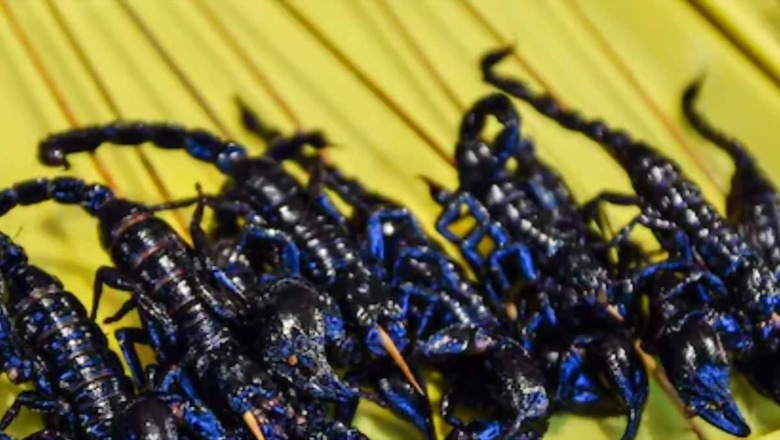
views
The diverse flora and fauna on Earth are still not discovered and are waiting to be found. In the latest study published in the Zootaxa journal, a bunch of researchers claimed that they had found a new species of scorpions at the Kaeng Krachan National Park in Phetchaburi Province, Thailand. This new species is described based on three male and one female specimens which were found hiding under the rock. They were found to have eight eyes and eight legs smaller than normal scorpions. This new species is placed within the subgenus Euscopiops and has been given the name Euscorpiops Krachan, crediting the National Park of Thailand where the discovery took place. It has gone viral now.
While exploring the wildlife at the Kaeng Krachan National Park, the researchers saw a hairy and brown creature hiding under the rocks. Experts claim that the colour of the organisms was so well camouflaged with the rock that it was hard to distinguish between them at first look. The scientists initially thought that the organism was searching for prey but as they went closer they discovered that the creature was carrying four of its children who were clinging on its back. Some were on his back and some were under his feet, as written in the study.
Soon the scientists realised that the creature in front of them was a new species of scorpion, which they had discovered. Hence, they named it Kaeng Krachan scorpion. They are one inch long and have hair on their skin. One of the highlighting features of the newly found scorpion specimen is that they have eight eyes and eight legs which has now shocked most of the scientists and wildlife experts. This observation has only been identified with the shape of its body, the DNA analysis of this scorpion has not been reported yet.
It was found in the Tenasserim Mountain Range of the Kaeng Krachan National Park which is majorly covered by rainforests. The members of the genus Scorpiops are ambush predators often found under the rocks. It limits their distribution potential, which leads to a high rate of endemism within the genus.




















Comments
0 comment